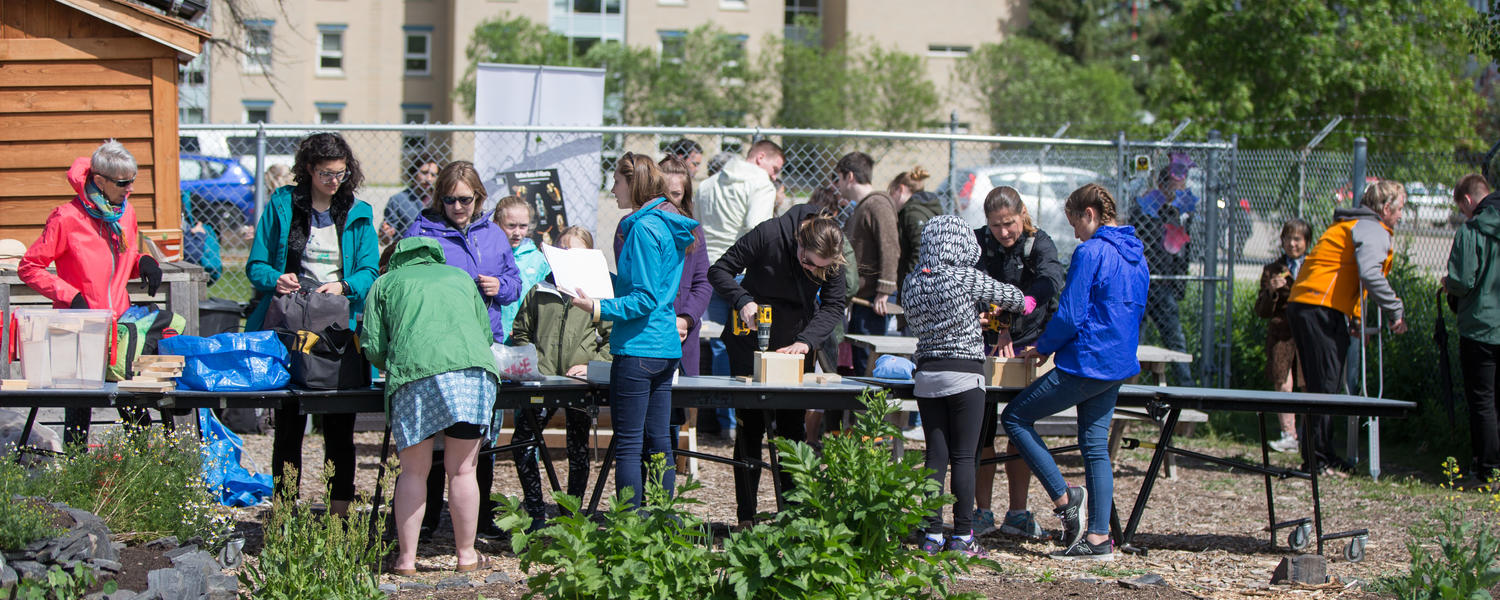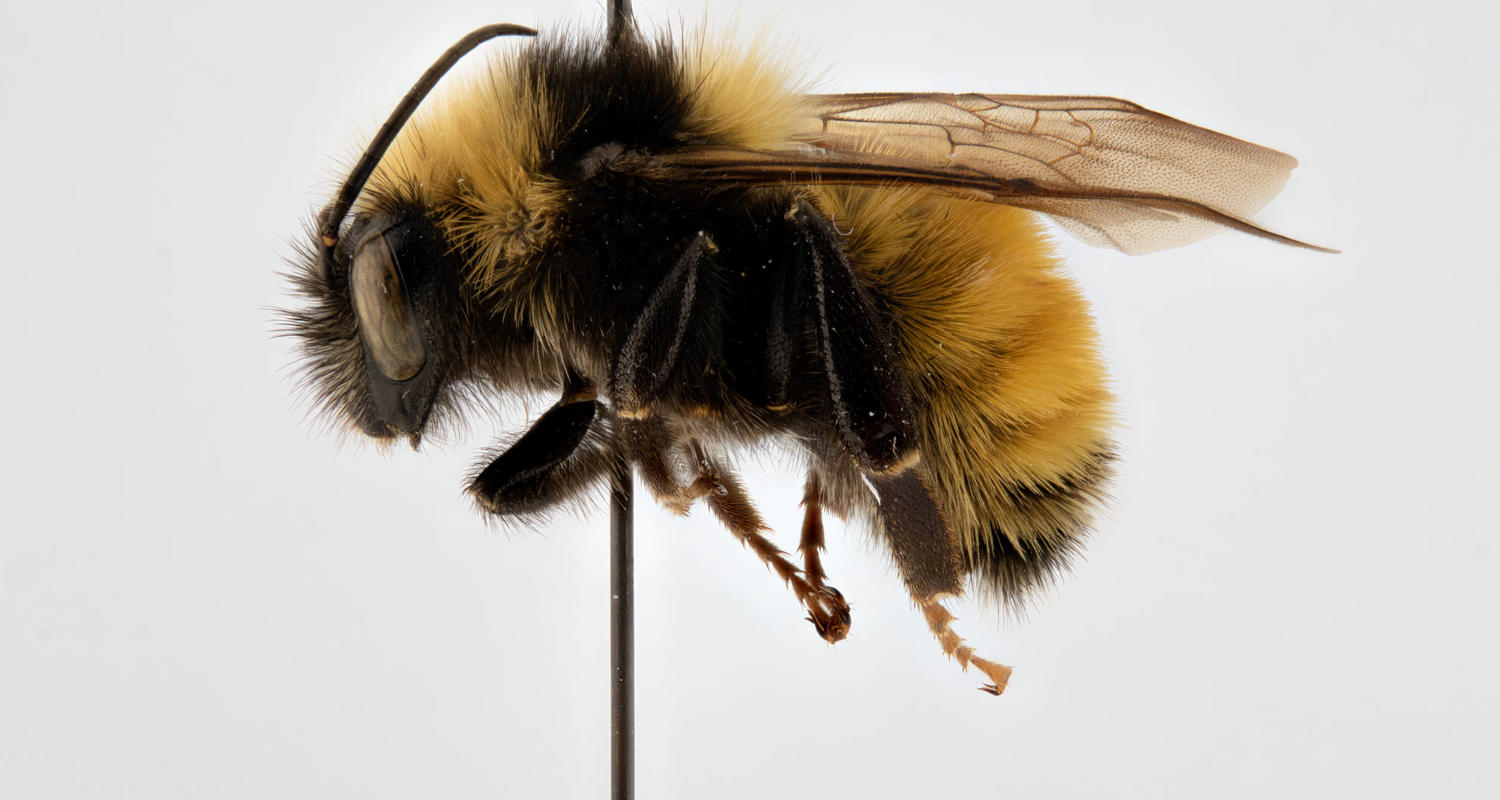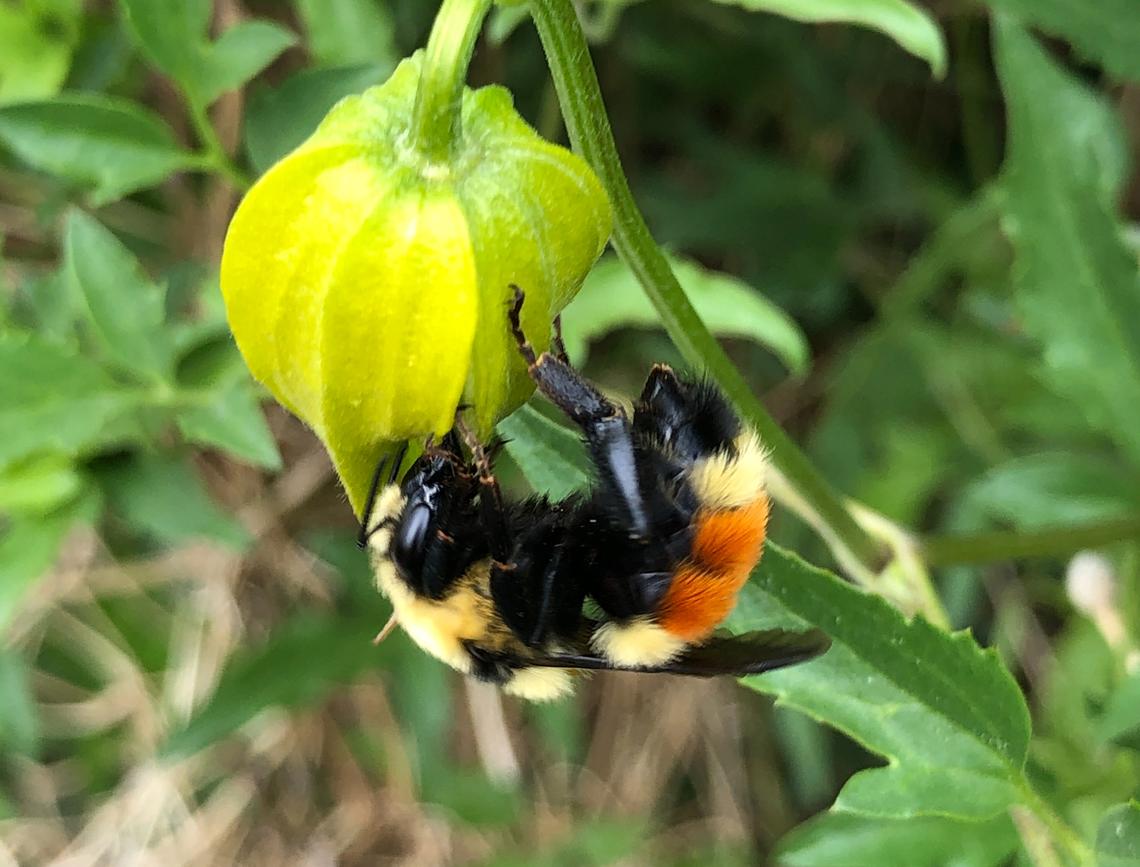Beesources and Beesearch
The University of Calgary is committed to creating and enhancing pollinator habitat on our campus . Learn more about our initiatives and how you can take action below.
Exploring academic, engagement, daily operational and administrative practices to make campus more pollinator-friendly.
Guided by the Institutional Sustainability Strategy, UCalgary is exploring research, teaching and learning, campus and community engagement, and daily operational and administrative practices to make campus more pollinator-friendly.

The University of Calgary is committed to creating and enhancing our pollinator habitat on campus. Lean more about how we achieved our Bee City Canada campus designation and how you can support pollinators in your community.
Pollinator Programs
The University of Calgary is committed to creating and enhancing pollinator habitat on our campus . Learn more about our initiatives and how you can take action below.

Thanks to a collaborative project between the Faculty of Science and Libraries and Cultural Resources (LCR), a digital collection of native Albertan bee species is now available to researchers and bee lovers across the globe. The invertebrate collection consists of approximately 1.45 million insect specimens and counting. This initial digital collection represents bee specimens from species native to Alberta, collected by the Galpern Lab @ Faculty of Environmental Design at the University of Calgary.

Mindi Summers
As humans continue to modify natural landscapes, gardens are becoming increasingly important habitats for pollinators in urban environments. Join us to learn more about the importance of pollinator conservation and how plant selection and garden maintenance practices influence pollinator survival, abundance, and diversity in cities.
Dr. Mindi Summers (Associate Professor (Teaching), Dept. of Biological Sciences, UCalgary) discusses pollinator diversity and what we know about how urban landscapes can support pollinator conservation.
Jennifer Hoglin (Master Gardener & Lead Designer, Gooseberry Gardens) describes how you can enhance the attractiveness and usefulness of your garden to pollinators, and thereby contribute to their conservation.